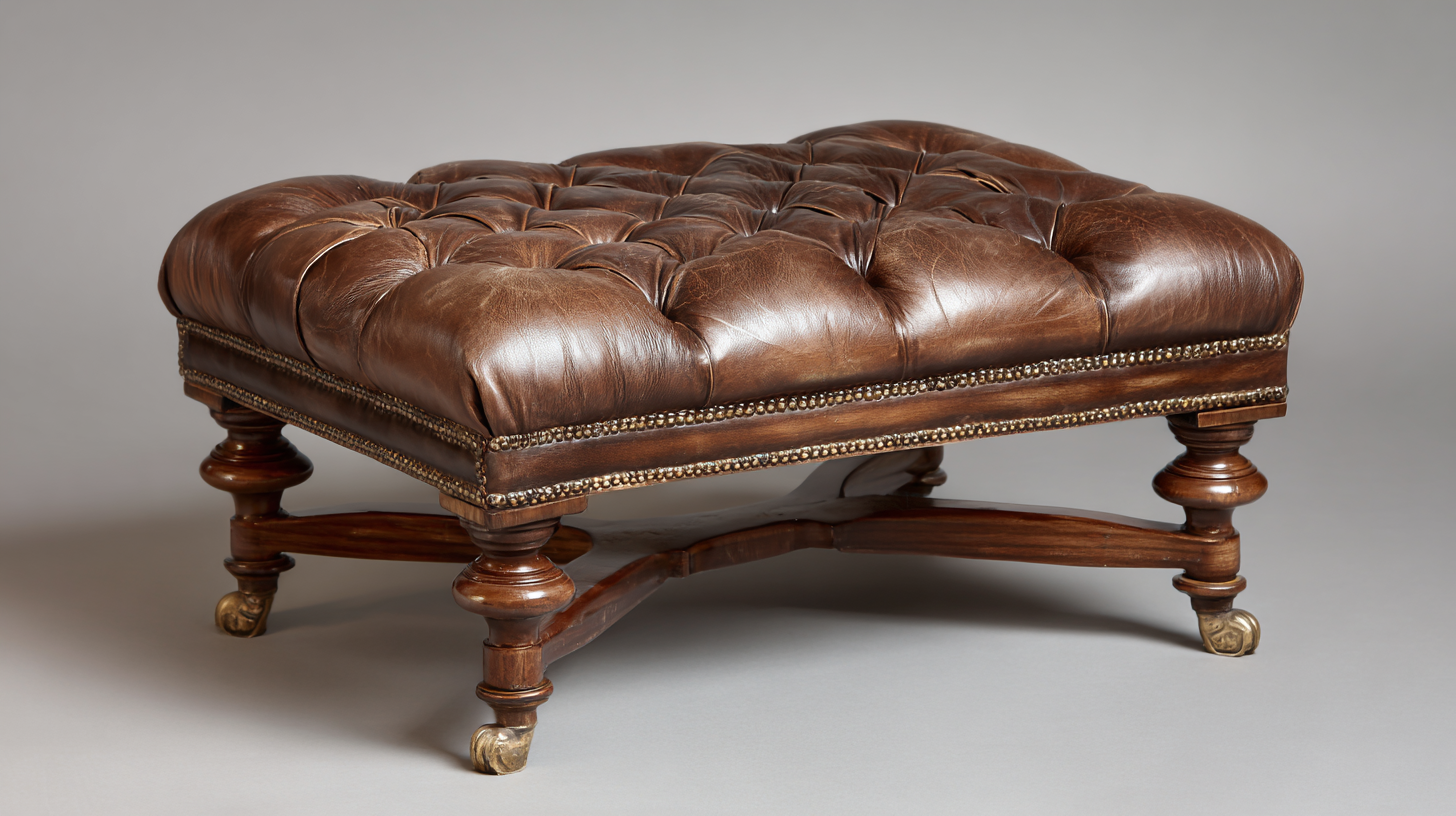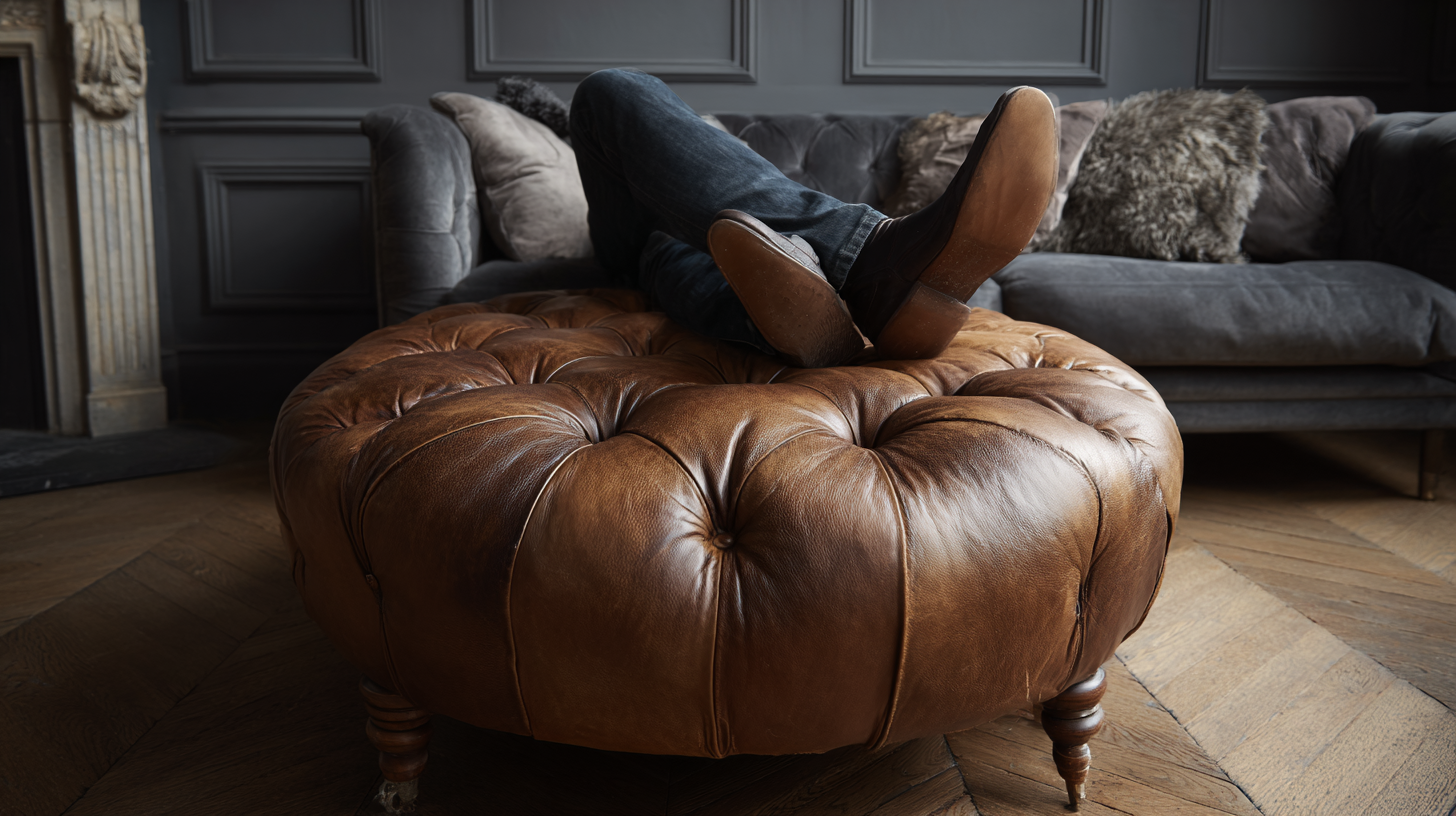Top 5 Challenges Faced by Buyers When Sourcing the Best Adjustable Footstool Globally
In today's fast-paced global market, sourcing the ideal Adjustable Footstool presents a unique array of challenges for buyers. According to a report by the Global Footwear and Furniture Market Analysis, the demand for ergonomic solutions in workplaces and homes has surged by 30% over the past five years, emphasizing the importance of comfort and adaptability in furniture design. Adjustability in furniture not only enhances user experience but also plays a crucial role in promoting health and well-being, contributing significantly to work productivity. Amid this growing market trend, buyers face hurdles such as fluctuating material costs, varying quality standards across suppliers, and the intricacies of international logistics. This blog will explore the top five challenges faced by buyers when sourcing the best Adjustable Footstool and provide practical strategies to navigate these complexities effectively.

Understanding the Global Footstool Market: Key Trends and Growth Projections
The global footstool market has witnessed significant growth in recent years, driven by the rising demand for versatile and ergonomic furniture. According to a recent report by Grand View Research, the global market for footstools is expected to reach $3.5 billion by 2028, growing at a CAGR of 3.6% from 2021 to 2028. This growth can be attributed to the increasing emphasis on home ergonomics and the rising popularity of remote working setups, which have led consumers to seek functional furniture solutions that also enhance comfort.
As buyers explore the market, they encounter several key trends impacting their sourcing decisions. One notable trend is the increasing preference for sustainable and eco-friendly materials. A survey by Statista indicates that 70% of consumers prefer products made from recyclable materials, highlighting the importance of sustainability. Additionally, customization has become a significant factor, with many manufacturers now offering adjustable designs to meet individual customer needs.
**Tip:** When sourcing adjustable footstools, look for manufacturers that emphasize sustainability in their production processes.
Another challenge buyers face is competition among suppliers, which can lead to price fluctuations. Keeping abreast of market trends and developing strong relationships with reliable suppliers is crucial in navigating this competitive landscape.
**Tip:** Regularly attend industry trade shows to network with suppliers and stay updated on the latest innovations in footstool design.
Top 5 Challenges Faced by Buyers When Sourcing the Best Adjustable Footstool Globally
This chart illustrates the top challenges faced by buyers in the global adjustable footstool market, highlighting key obstacles in sourcing and decision-making.
Assessing Material Quality: The Importance of Durability and Comfort for Adjustable Footstools
When sourcing the best adjustable footstools globally, assessing material quality is paramount. Buyers must prioritize durability and comfort, as these two elements significantly influence user satisfaction. High-quality materials not only extend the lifespan of footstools but also ensure they can withstand daily wear and tear.
For instance, footstools made from solid wood or high-grade metals are more resilient than those crafted from flimsy materials, reducing the likelihood of breakage over time.
Equally important is the aspect of comfort, which directly affects the user experience. Footstools that utilize memory foam or high-density padding provide optimal support, promoting better posture and reducing fatigue during prolonged use. Additionally, fabrics that are soft yet breathable can enhance comfort, making it vital for buyers to consider textures and finishes that align with their target audience’s needs. When sourcing adjustable footstools, striking a balance between durability and comfort will not only meet customer expectations but also establish brand reputation in an ever-competitive market.
Navigating Supply Chain Complexities: Common Pitfalls in Sourcing Footstools Internationally
 When sourcing adjustable footstools on a global scale, buyers often encounter significant supply chain complexities that can lead to costly pitfalls. According to a report by McKinsey, supply chain disruptions have increased supply chain costs by approximately 30% since the pandemic began. This dramatic rise reveals the strain on logistics and global sourcing, where delays and increased shipping costs can directly impact a buyer's bottom line.
When sourcing adjustable footstools on a global scale, buyers often encounter significant supply chain complexities that can lead to costly pitfalls. According to a report by McKinsey, supply chain disruptions have increased supply chain costs by approximately 30% since the pandemic began. This dramatic rise reveals the strain on logistics and global sourcing, where delays and increased shipping costs can directly impact a buyer's bottom line.
In addition, a study by the Harvard Business Review highlights that approximately 70% of sourcing challenges stem from inadequate supplier communication and transportation issues. Poor coordination with suppliers from different regions can lead to discrepancies in product specifications and unexpected lead times. This emphasizes the need for buyers to establish robust relationships with suppliers and consider multiple sourcing options to mitigate risks associated with dependency on single suppliers. In this intricate landscape, data-driven strategies and agile supply chain practices are essential for buyers aiming to successfully navigate the challenges of sourcing the best adjustable footstools.
Evaluating Supplier Reliability: Metrics to Ensure Quality and Consistency in Footstool Manufacturing
When sourcing the best adjustable footstools globally, evaluating supplier reliability is crucial for ensuring quality and consistency in manufacturing. According to a report by the International Trade Centre, approximately 60% of buyers highlight supplier reliability as a primary concern when selecting products. This indicates a pressing need for established metrics to effectively assess supplier capabilities, thereby minimizing risks associated with poor product quality.
One key metric in evaluating supplier reliability is their historical delivery performance. Data from the Global Supply Chain Council shows that companies with reliable suppliers experienced a 15% higher customer satisfaction rate. Additionally, assessing compliance with industry standards, such as ISO 9001, can provide insights into a supplier's commitment to quality management processes. For instance, manufacturers adhering to these standards tend to have reduced defect rates, which, as per the latest figures from the Manufacturing Performance Institute, can range from 5% to less than 1% depending on the supplier's adherence to these guidelines.
Ultimately, by employing these metrics, buyers can create a more streamlined sourcing process, ensuring that they partner only with suppliers who can deliver adjustable footstools that meet their quality and consistency expectations.

Adapting to Consumer Preferences: Trends in Adjustable Footstool Design and Functionality
As consumer preferences evolve, the adjustable footstool has undergone a significant transformation in design and functionality. Today's buyers prioritize ergonomics, seeking solutions that not only provide comfort but also promote health and well-being. This shift towards a more health-conscious lifestyle has led manufacturers to incorporate innovative features such as adjustable height settings, built-in massagers, and orthopedic designs that cater to diverse user needs.
Furthermore, sustainability has become a key consideration for consumers, driving demand for eco-friendly materials and production processes. Buyers are increasingly looking for products that are not only functional but also ethically produced. This trend has prompted designers to explore new materials, such as recycled plastics and sustainable woods, ensuring that the adjustable footstools align with the environmental values of modern consumers. By keeping an eye on these shifting preferences, manufacturers can effectively capture market share while delivering products that resonate with the growing focus on health and sustainability.
Top 5 Challenges Faced by Buyers When Sourcing the Best Adjustable Footstool Globally - Adapting to Consumer Preferences: Trends in Adjustable Footstool Design and Functionality
| Challenge | Description | Importance Level (1-5) | Current Trends |
|---|---|---|---|
| Quality Assurance | Ensuring products meet durability and safety standards. | 5 | Focus on durable materials and safety certifications. |
| Customization Options | Need for customizable designs to fit diverse consumer needs. | 4 | Increasing demand for modular and adjustable features. |
| Sourcing Logistics | Challenges in shipping and timely delivery from suppliers. | 5 | Growth of local sourcing to reduce lead times. |
| Market Awareness | Staying updated with the latest design and functionality trends. | 3 | Influence of social media on design trends. |
| Cost Management | Balancing quality and pricing to meet consumer expectations. | 4 | Innovative manufacturing techniques to reduce costs. |